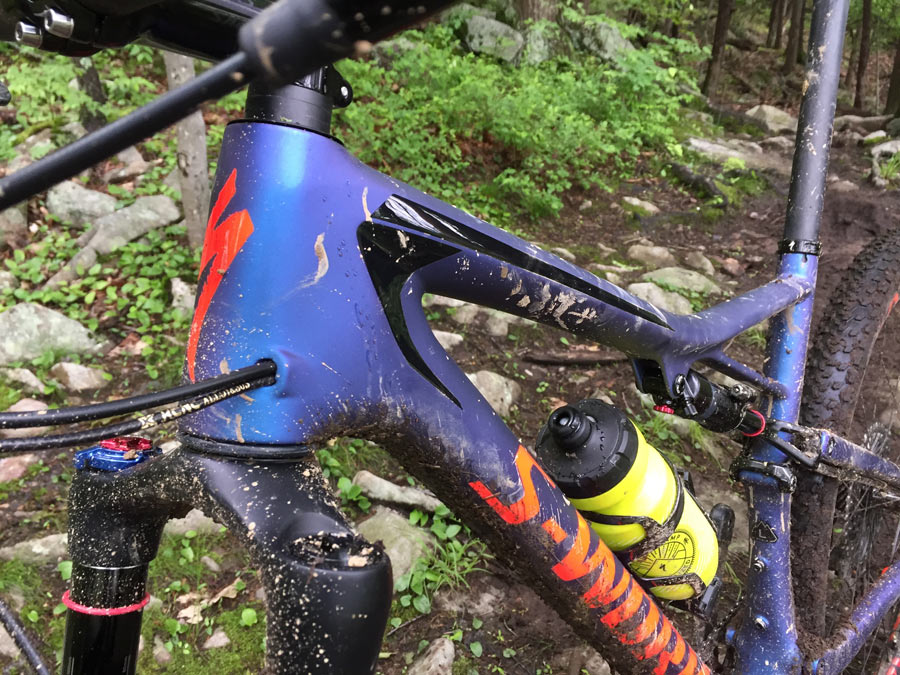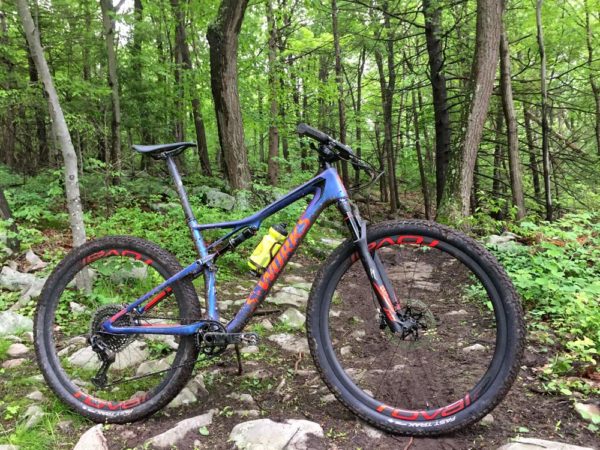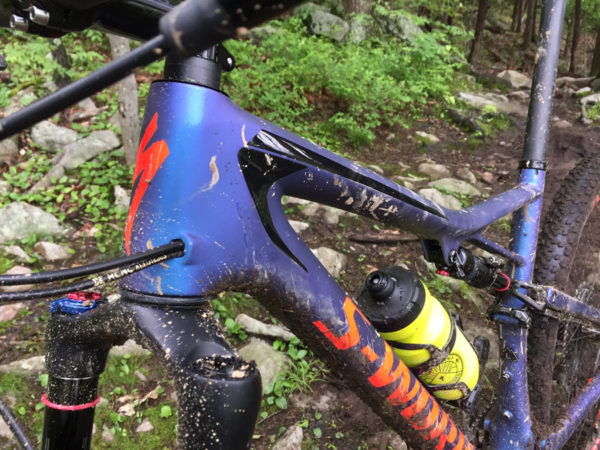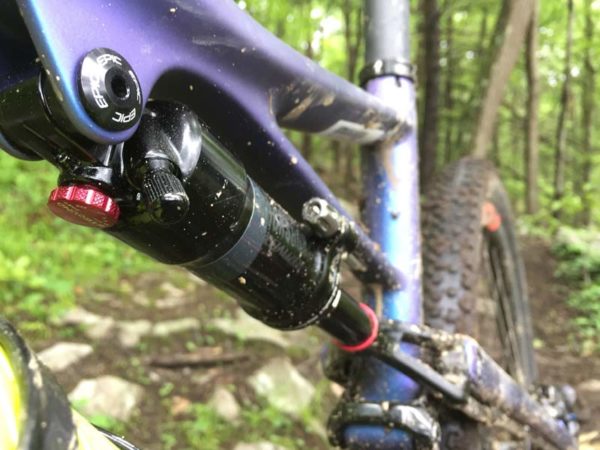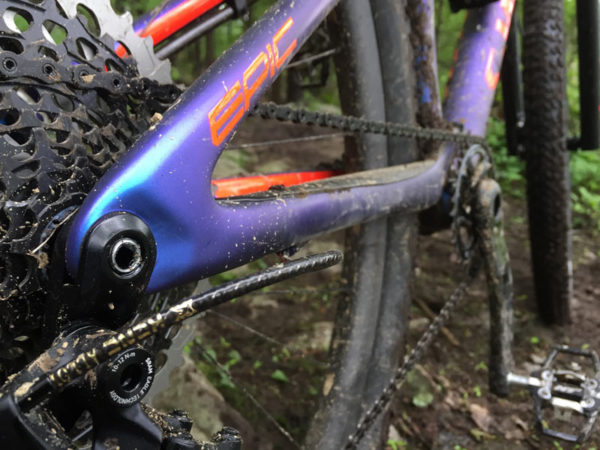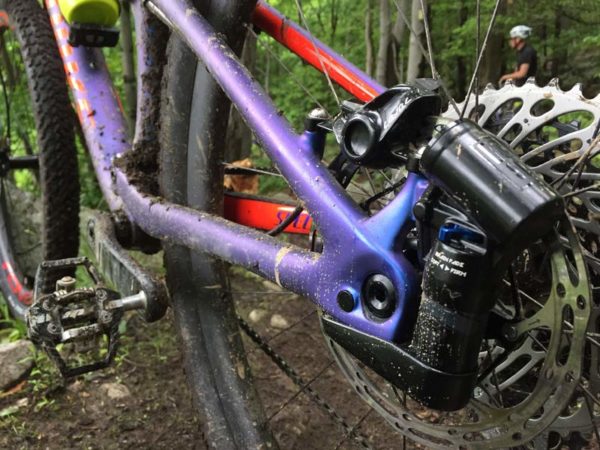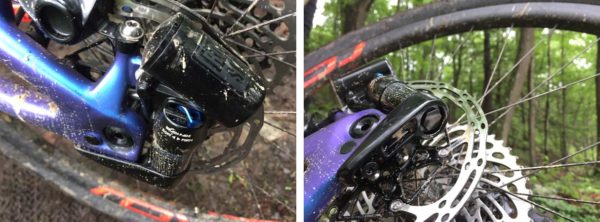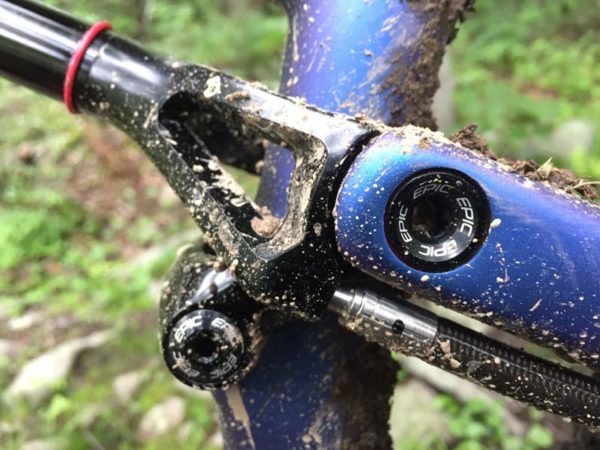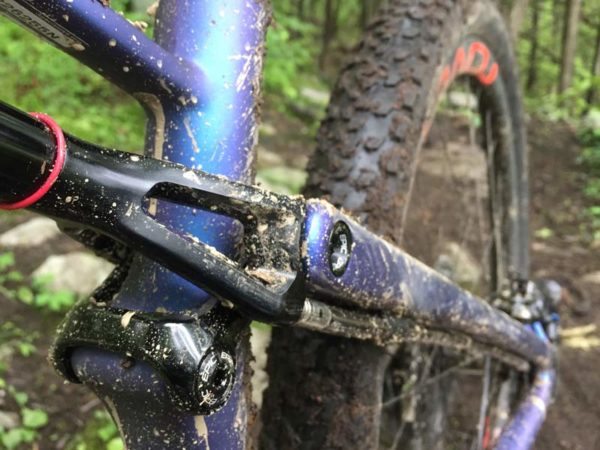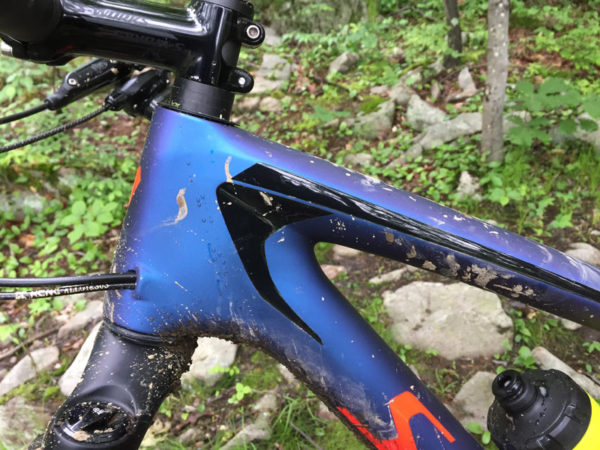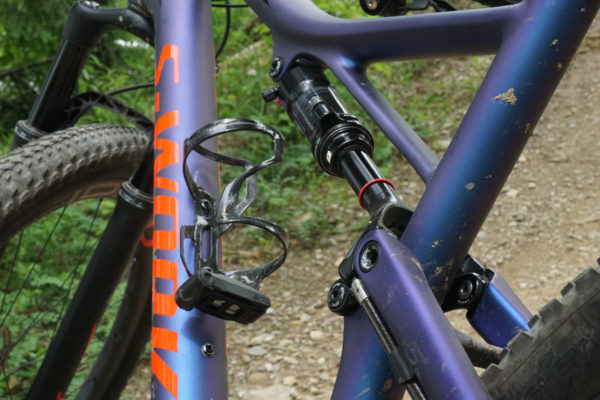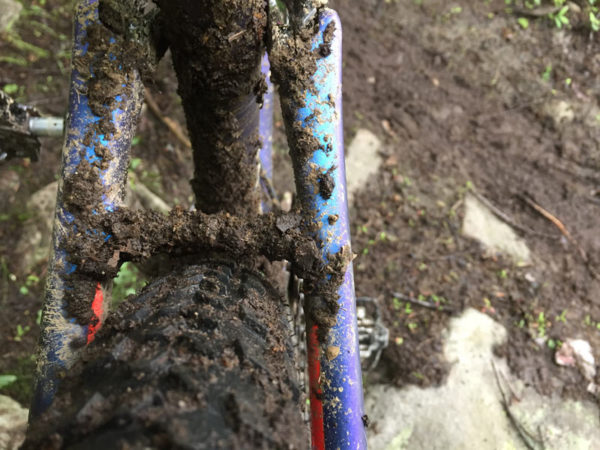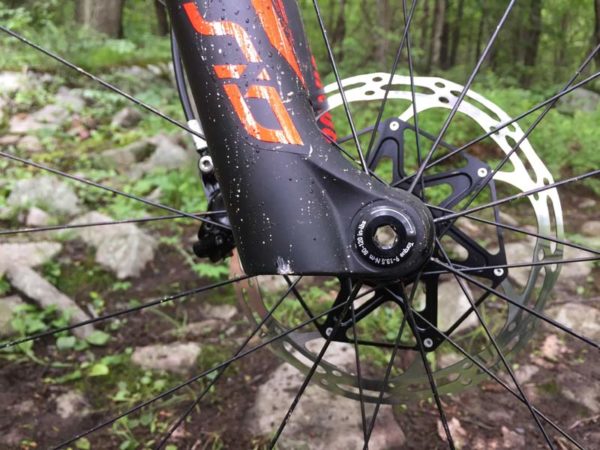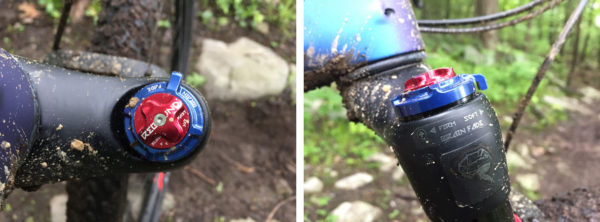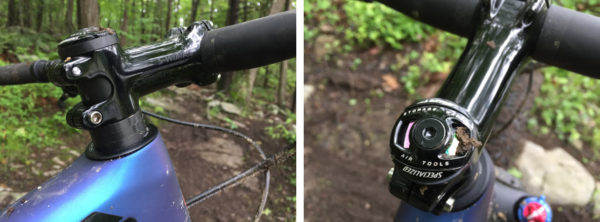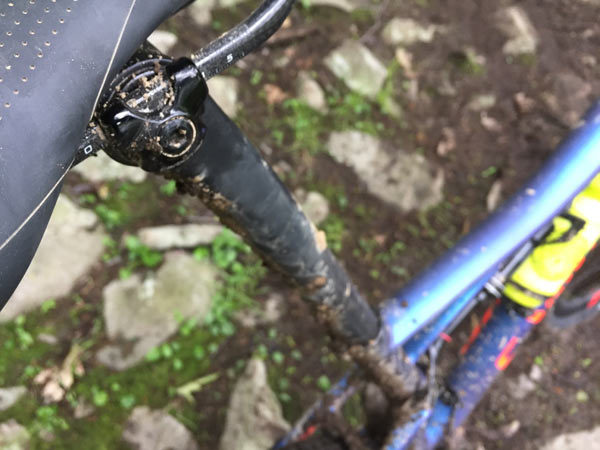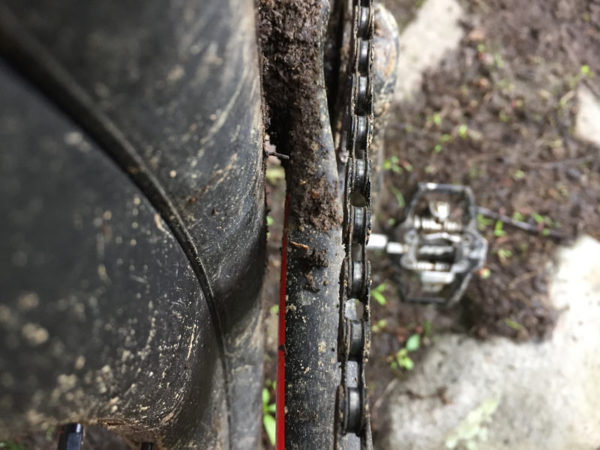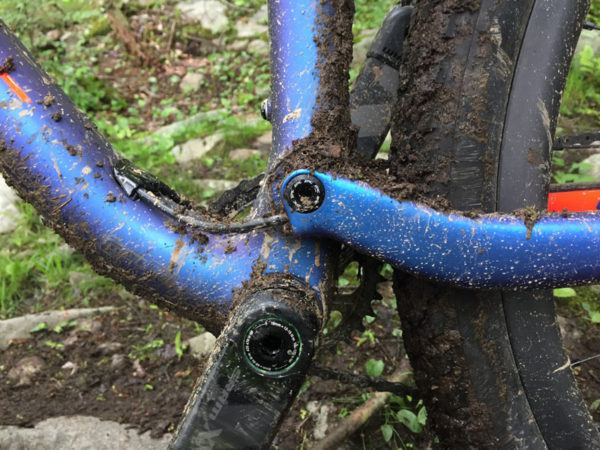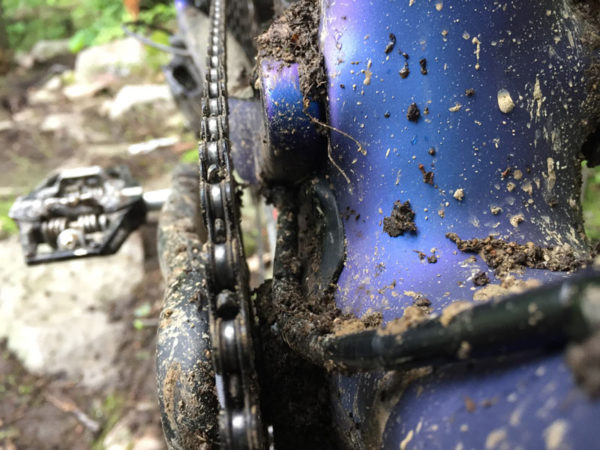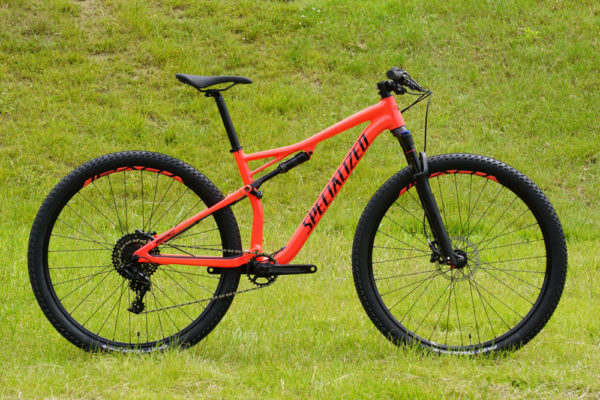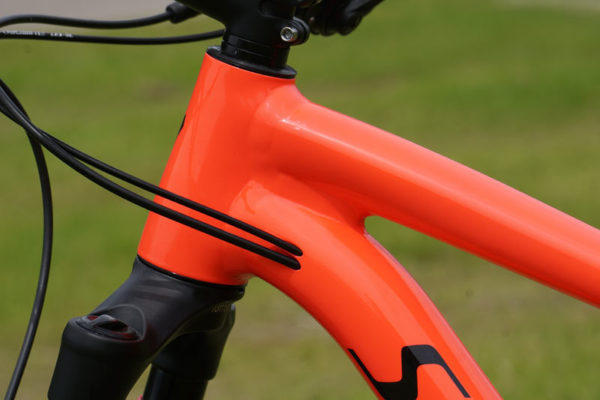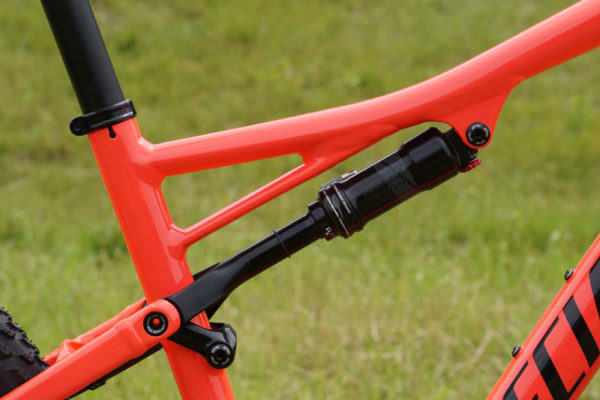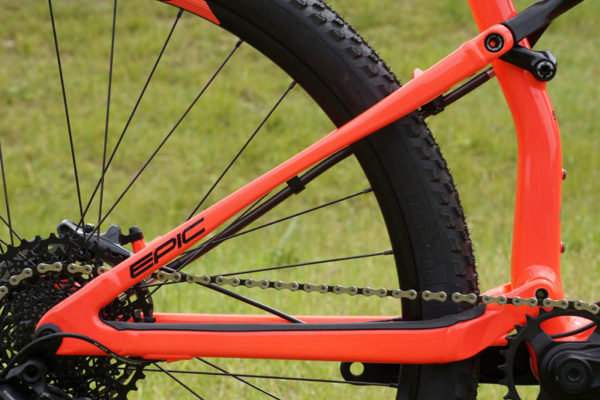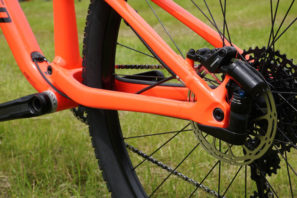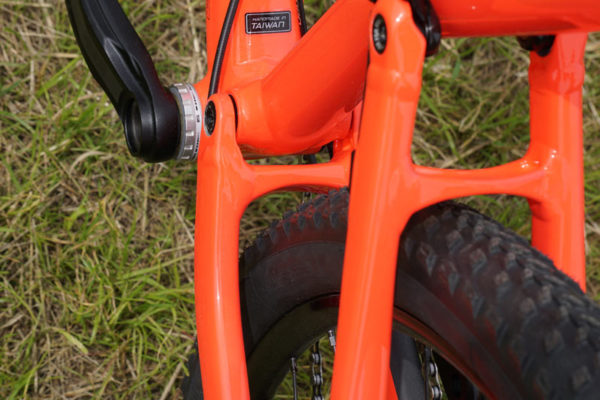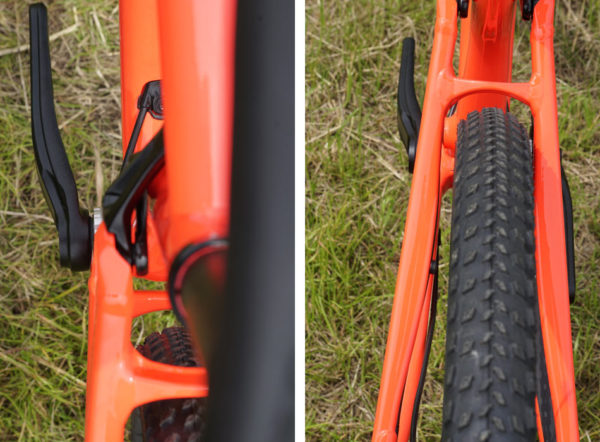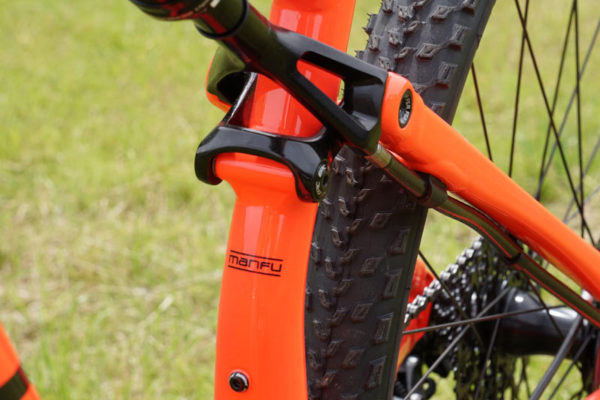The Specialized Epic FSR full suspension mountain bike has accumulated 96 major victories over the years. Which is great, but they wanted to make it better for the rider. And lighter. And smarter.
Among Specialized’s full suspension bikes, only the Epic gets their BRAIN technology to control the compression damping. That system gets completely revised, and the bike itself switches to a 1x drivetrain system only, gets a little slacker and faster, and is absolutely much, much lighter than before. Here’s what they did…
While many XC bikes are starting to spec 120mm forks and act like trail bikes, the Epic FSR is a race bike. It’s got 100mm travel front and rear, and that’s all they’ve tested it for. And because XC races are still won on the climbers, one of the big goals was to drop weight. It gets lighter by borrowing the “Rider First” technology from their road bikes, which means size-specific layups to keep the ride quality consistent. This first moved to mountain bikes on their 2018 Epic S-Works hardtail, which is one of the lightest bikes they’ve ever made.
Much of the weight savings comes from the back of the bike. The rear is 240g lighter (39%) than before because they now get a carbon rear end instead of alloy…so all 2018 models are either full carbon, or full alloy. For complete frames, the S-Works models are 345g (0.76lb) lighter, and Comp/Expert is a whopping 525g (1.15lb) lighter. These are are just frame weight savings – not complete bikes, just the frames. That’s the equivalent of taking the chainstay, shock yoke and some hardware off the old S-Works frame. For the other frames, it’s like removing the shock and all of its mounting hardware, yoke and some spacers. This is massive savings.
The S-Works frame comes in at 1,850g with a light clear coat plus all hardware, clips, and shock, but excluding rear axle. Rear axle is 33g, so it all adds up to 1,883g before you start putting components on it.
What makes those numbers even more impressive is that the prior BRAIN shock was actually 20g lighter when you take into consideration the longer hose, so frame weight savings really are coming from the frame itself. The front triangle is 100-120g (14%) lighter merely thanks to improved layups.
The rear triangle does away with the rear pivot below the axle, so it relies on seatstay flex throughout the wheel path. They say that rear pivot was only moving 3º, which is something they could get out of carbon layup. At the top of the seatstay, the gap between upper and lower pivots only moves by 28mm throughout the entire range of travel, which translates to that 3º of rotation.
The rear triangle is molded into the position it ends up in at sag, so you’d actually need to stretch it slightly to bolt it into the frame. The lower main pivot is placed to minimize pedal bob even in the open position, designed ideally around a 32-tooth chainring. A smaller chainring will theoretically add more anti-squat, and a larger ring might theoretically add a little more pedal bob.
To make the bike smarter, they did a lot of testing with their BRAIN system inside the suspension. Efficiency is very important for the short travel, race category, but the bike still has to be comfortable and compliant to track the terrain without beating up the rider.
The new BRAIN is redesigned from the ground up. Originally put on the bike 15 years ago, the BRAIN system added motion-sensitive damping to their suspension in an effort to keep the rear end stiff under power but let it work when you hit a bump. In that time, it’s gotten smaller and better, but their testing equipment measures not just inputs to the shocks, but also braking and acceleration forces and more.
What they learned was that pedaling efficiency is great for getting up to speed. But once you’re cruising along, the ability to smoothly soak up the terrain is what’ll keep you going fast. So, the reservoir with the inertia valve has been moved behind the rear axle. This changes the relationship from 0.8 to 1.0, meaning for every 1mm of movement at the axle, the reservoir moved 0.8mm. Flipping the positions means a slightly better than 1:1 relationship in favor of the IV. This helps it release faster because it’s more sensitive.
In the early days, the inertia valve was the BRAIN. Then they added AutoSag, and now the Spike Valve. Spike Valve is a regressive valving that produces a flat compression curve, which means it maintains control and movement deeper into its travel. It works by controlling oil flow more carefully up to a specific flow rate, after which it dumps open to take a big hit. Inside the Spike Valve is the entire low speed compression circuit. There are flow ports leading to a shim stack, which gives them the desired low speed control. Once flow rate is too fast to move through those ports and/or the shims are bending too much and starting to ramp up their resistance (essentially creating hydraulic lock because the fluid is moving too fast for the ports), then the entire low speed circuit simply slides up and out of the way to let more oil flow around it. What that means for the rider is that it’ll stay plush and smooth even through successive big hits instead of jacking up because the shock rate isn’t ramping up too steep at the end of the stroke.
Combined, the low-speed circuit and Spike Valve, which is more of a mid-speed solution, provide the support you need. Mike McAndrews, Specialized’s director of suspension technologies, says with this short amount of travel, so there’s no need for a distinct high speed compression circuit. He adds that when you have a high speed hit, it’s usually at the very top of the stroke, and by the time it’s deeper into the stroke and already slowing down, the other two circuits give them the control they need.
Despite the proximity to the brake rotor, they say their testing didn’t measure enough heat transfer to the BRAIN unit to impact suspension performance.
For the rear shock, they spent a lot of time with fluid dynamics to control how well the fluid moves from the shock down to the reservoir. A bad design can create nanoseconds of lag at the point where the shock transitions from compression to rebound. So they cleaned up the design to make the flow more linear to improve damping hysteresis by integrating the oil flow into the shock yoke itself, which leads the oil to a hose running straight down the seatstay. The result? Better traction thanks to a more responsive suspension.
Noticed that other big change yet? Yes, they’ve transitioned from a Fox shock at the rear to Rockshox. Why? It was mostly a timing thing. Specialized does all of the design work in house, then relies on an outside partner to manufacture the suspension for them. For this project, Fox’s timeline was too far out for them to launch the bike on schedule, but Rockshox was able to accommodate. And Specialized was already partnered with Rockshox for the BRAIN equipped forks, so it was an easy transition.
The third piece of the race puzzle is performance. The front triangle is about 20% stiffer. There’s no front derailleur, and currently no mounts for a chain guide or bash guard. They say there’s a third party working on a solution, but they haven’t had any issues with chain drop on Eagle chainrings, and Expert level and up bikes get SRAM Eagle. Others will get Race Face N/W rings. One of the main reasons for going 1x only was to make room for a wider bearing placement on the main pivot, and it also let them run straighter tube shapes instead of the convoluted shapes used before. Despite this, they kept the rear end stiffness the same so it would maintain some character on the trail and work with the terrain instead of fighting it.
Since racers aren’t usually wearing hydration packs, the bikes fit two large size bottles inside the front triangle even on size small, with SWAT box and tool.
Lastly, the bike needed to be more capable. As we’ve all seen from World Cup racing, XC courses have become legitimately aggressive trails with rock gardens, drops and tech sections. Where most racers were riding hardtails with tight geometries just a few years ago, many top riders are now running full suspension with slacker angles and even dropper posts. So, the new Epic FSR follows suit.
The goal was to make it more stable through the rough descents and at higher speeds, but still have that snappy race feeling. Part of this is done with geometry.
The other part is done with a proprietary fork offset that’s closer to what’s found on their enduro bikes. It’s a balance between stability and quick handling.
Reach increases by 10mm, and stem is shortened that much. And the head angle is a bit slacker. Normally this would push the axle out farther, which makes it feel floppy. And it reduces the rider’s weight over the front wheel, which could further reduce control. So, they shortened the axle offset by 9mm to bring that front wheel back in a bit.
Chainstay goes to 435mm, which tightens up the wheelbase at the back, but the wheelbase is still just a few millimeters longer overall.
Seatpost goes to 30.9 so it can run any long travel dropper post if you want…not just the shorter travel XC posts made for 27.2mm diameters. Stock, the bike will come with a new S-Works carbon rigid seatpost with a very slight offset.
The changes are all made in an effort to make it a faster bike. But don’t take our word for it. Ned Overend also helped with development, as did Christoph Sauser. They’ve been testing alloy mules with adjustable angles for about two years. With all the years Overend has on this model, he has a lot of Strava times. And he says the differences are dramatic and that he’s been knocking off his personal bests left and right on the new Epic.
A few other details to point out: Tire clearance on the bike is OK with traditionally narrower XC tires, and it looks a little tighter here when the bike’s spec’d with Specialized’s new carbon wheels.
Cable routing across the entire bike is very direct and cleanly laid out. Even when it runs externally, it’s usually hidden in a perfectly straight line underneath the stays.
2018 SPECIALIZED EPIC ALLOY
Much of the same development work went into making alloy versions of the new Epic, too. And these models will start to use SmartWeld, first introduced on the Allez and soon to be found on more of their mountain bikes (like a new hardtail we’ll tell you about shortly).
Alloy versions get tuned butting in the tubes to allow for the same rear end flex and overall front end stiffness and ride quality.
The alloy frame maintains the same clean, integrated look as the carbon bike, with arguably prettier cable entry ports at the head tube.
Shown here with a 29×2.1 Fast Trak tire, which will come as standard equipment, offers decent clearance. We suspect a 2.25 would fit just fine, but we didn’t have any trouble with traction on the stock setup.
Funny story that we haven’t verified: The shape of the rocker arm where it mounts to the frame looks a little like a FuManChu mustache. So they named it Manfu and patented the design, but left the patent open so that anyone case use it as long as they put “Manfu” on the frame below it. Classic.
Not shown, Women’s versions are offered in both materials, and they use the same frames. Specialized pulled from Retul fit data accumulated over the years, which showed that the same frames fit men and women equally well. But, suspension tunes are different, with lighter compression and rebound circuits, and the touchpoints (shorter cranks, narrower handlebars, women’s saddles) are women’s specific.
COMING UP: There’s more to this story. Check out our in-depth look at the new BRAIN shock, actual weights and retail pricing, and our first ride impressions (coming soon, links added when posted). There’s also a brand new new Chisel alloy hardtail XC race bike!
